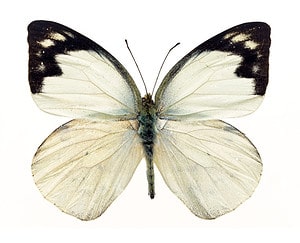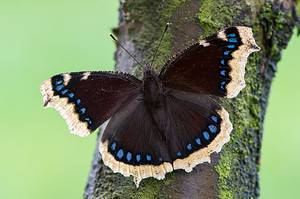Butterflies are fragile, beautiful flying insects with large scaly wings, having six jointed legs, three body parts (the head, thorax, and abdomen), a pair of antennae, compound eyes, and an exoskeleton. Tiny sensory hairs cover their body, and the thorax contains the muscle that makes the legs and wings move. Surprisingly, these beautiful flying creatures are the only insects with scales covering their wings and overlapping in rows. There are more than 17,000 species globally and around 750 species in the United States. With this number, you might wonder if these insects have any predators that eat them. We’ll look into this in a bit.
The Background on Butterflies
Without a doubt, all animals need food to survive, and butterflies are no exception. These pretty tiny insects usually eat sweet nectar from flowers and plants and, sometimes, tree sap. It is okay to say that butterflies love sweets; yes, they do, and they can’t resist the sweet taste of nectars. However, aside from their regular feeding habit, some butterflies eat other tiny insects too. Worthy of mention, butterflies eat with the aid of their proboscis – which functions as a drinking straw or sucking pump for their sweet liquid meals. Having talked about these fragile, beautiful flying insects, let’s look into what eats butterflies.
What Eats Butterflies?
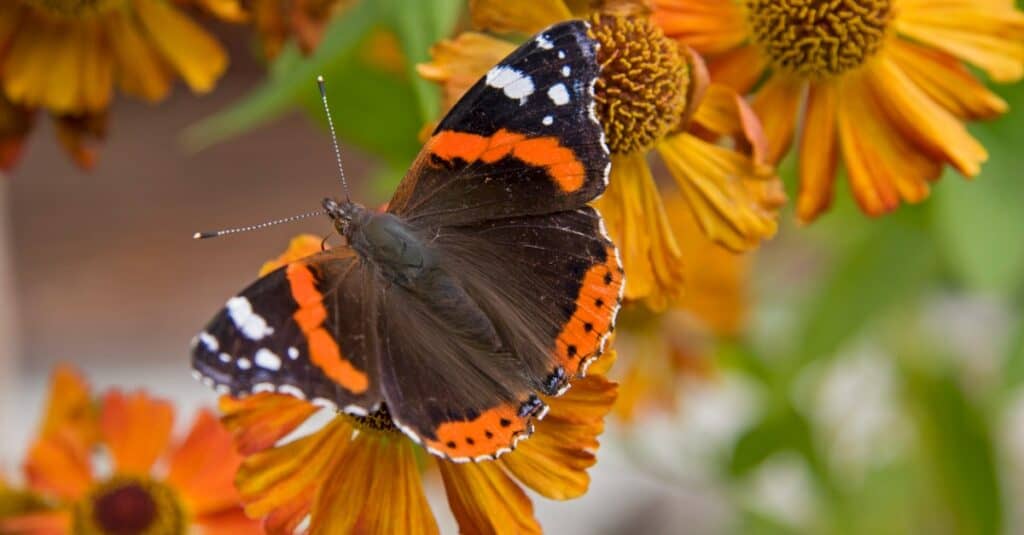
Birds, snakes, wasps, and rats eat butterflies.
©iStock.com/Tinieder
Animals like birds, lizards, ants, wasps, snakes, rodents, monkeys, and rats eat butterflies. Butterflies are mostly eaten at different lifecycle stages, including eggs, caterpillars, and mature forms. They are unfortunately not hard-to-find for some animals. Sadly, their bright, beautiful colors give them away to predators at a snap most of the time. Nonetheless, their brilliant colors could mean danger to predators at other times. Butterflies predators include:
The lifecycle of these beautiful flying insects metamorphosizes from the egg, graduates to the larvae, pupa, and then adult. Many butterflies are sexually dimorphic, where females are the heterogametic (ZW) and males homogametic (ZZ).
Let’s look in-depth at predators of butterflies below.
Butterfly Predators: Birds
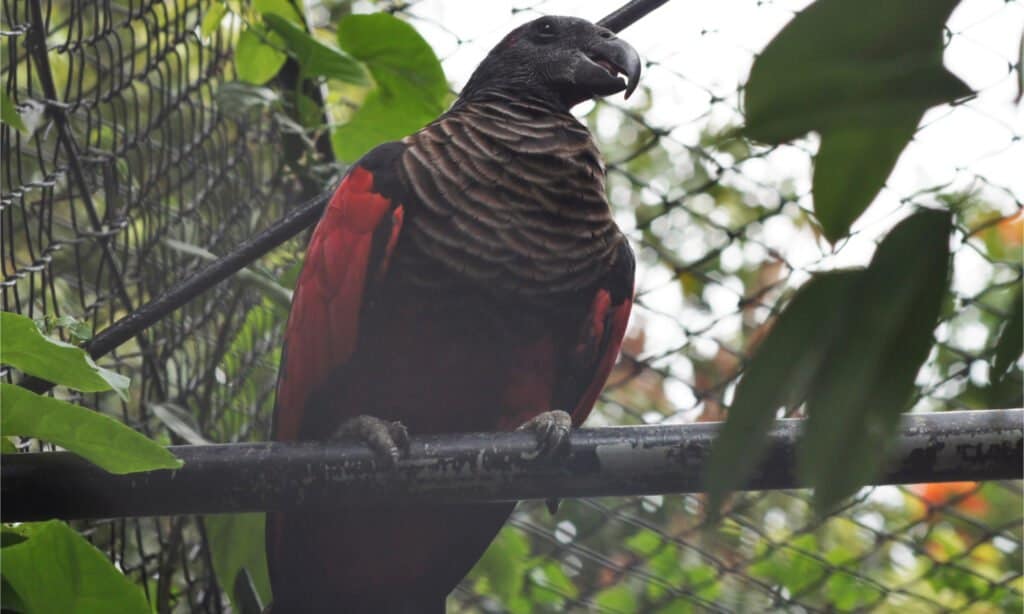
Birds like sparrows and parrots prey on butterflies.
©haryanta.p/Shutterstock.com
Birds are among the predators of butterflies. These warm-blooded vertebrates significantly impact the population of butterflies by eating them in different stages of their lifecycle. Astoundingly, birds including warblers, sparrows, parrots, orioles, grosbeaks, blue jays, martins, tanagers, and northern mockingbirds eat butterflies.
Butterfly Predators: Reptiles
Reptiles such as snakes and lizards are well known to eat butterflies. But they concentrate less on the butterfly’s wings as they do not add any dietary value to them. So, most often than not, reptiles devour their bodies while leaving discarded wings behind.
Butterfly Predators: Amphibians
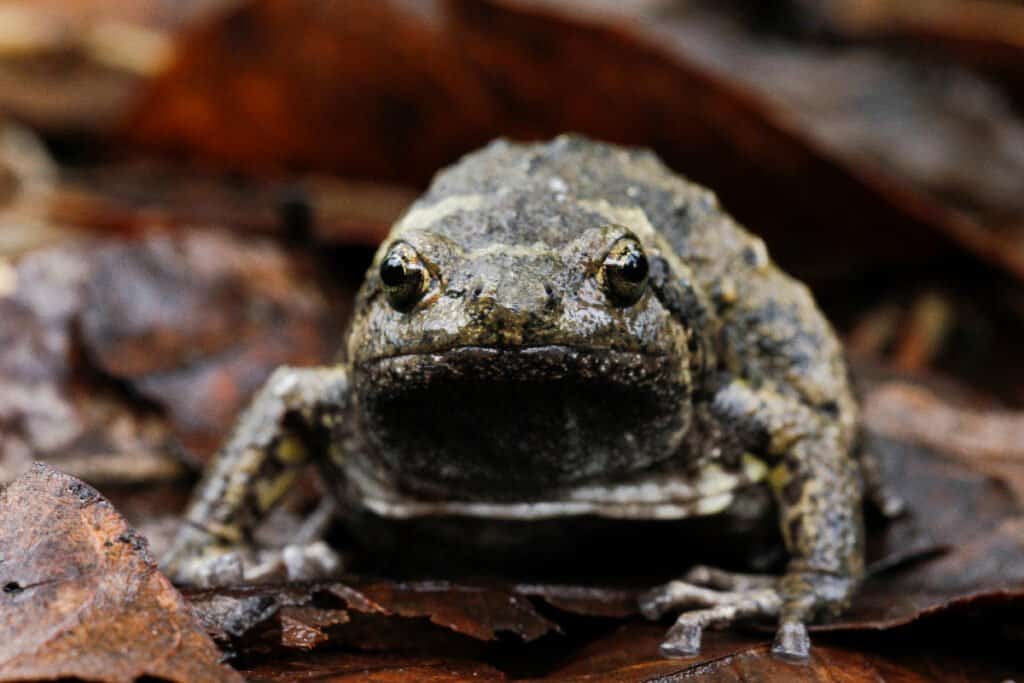
Toads and frogs eat butterflies.
©dwi putra stock/Shutterstock.com
Amphibians such as toads, frogs, and many others eat butterflies. Unfortunately, with a frog’s unique techniques of catching its prey, the butterfly often falls victim to its grip. Intriguingly, the squishy tissue containing the frog’s saliva plays a vital role in helping the frog hold on to its catch.
Toads, on the other hand, are very quick in motion. When a toad aims for a butterfly, it moves slowly close to it, then flicks out its long sticky tongue at once and snaps the butterfly into its mouth within milliseconds.
Butterfly Predators: Mammals

Unlike cats who eat butterflies, dogs rarely do.
©Amanda Almeida/Shutterstock.com
Most mammals generally will seize the opportunity to eat these alluring flying insects if an opportunity presents itself. Although some mammals, like dogs, enjoy chasing butterflies and other flying insects in midair, these beautiful insects do not make pleasant meals for them as they carry small amounts of milkweed toxins from plants enough to make a dog sick.
Like dogs chase after butterflies, cats, in like manner, pursue these fancy fliers but eat them, unlike dogs. Astonishingly, they are not affected by the toxic substances butterflies consume at their growing stage.
Butterfly Predators: Humans
Curiously, you may wonder if humans eat butterflies. The reality check here is that people eat these fancy insects in different parts of the planet. It appears to be a delicacy in countries like Asia, Mexico, and Africa. Shocking as it seems, some species are eaten and traded in these parts of the world, while others, like monarch butterflies, are avoided like the plague.
Other Dangers to Butterflies
The greatest threat to butterflies in recent times has been the forces of humans caused by habitat change, climate change, agricultural developments, and widespread pesticide use. Unfortunately, humans also consume, harvest, and trade these pretty flying insects.
How Do Butterflies Defend Themselves From Predators?
As with any other insects, butterflies have defense mechanisms against predators. For example, the monarch butterfly’s bright colors are a warning sign for vertebrates to stay away. Furthermore, butterflies also use their ability to fly at a very high speed to escape from their predators.
The red admiral caterpillar uses stinging nettle for food and protects itself from predators. Some other butterflies have eyespots on their wings that often surprise or confuse predators.
Others have camouflage that imitates leaves and tree barks, and on the other hand, others are brightly colored, suggesting to predators that they are toxic or poisonous.
What Are The Benefits Of Butterflies?
Butterflies have a couple of benefits to man, which includes the following:
- Butterflies are great for pollination, transferring pollen grains from one plant to another, which helps vegetables, fruits, and flowers produce new seeds.
- Their presence also gives humans and smaller animals a nudge on how safe and healthy the environment is.
Are Butterflies Venomous?
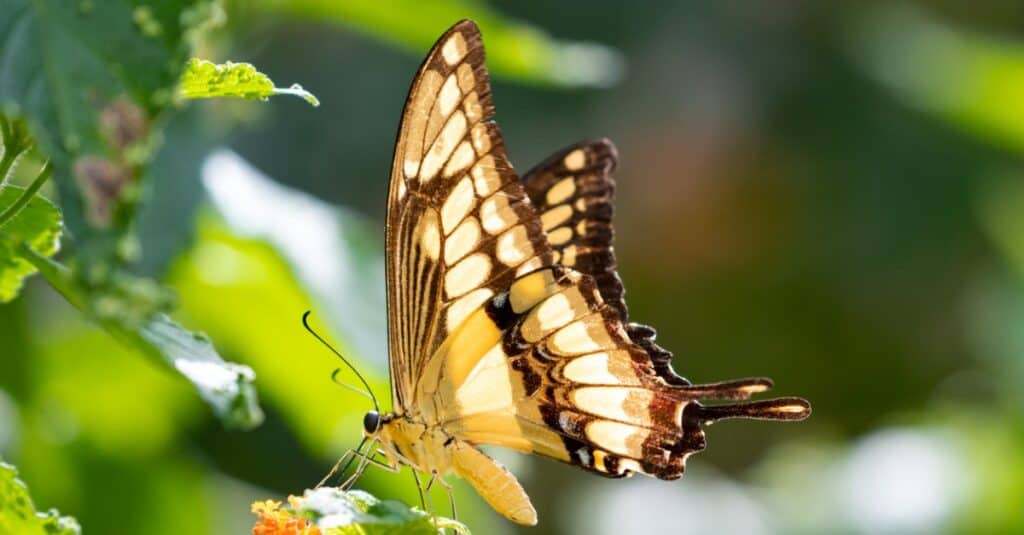
Even if butterflies were venomous, they lack piercing mouthparts to inject toxins into their enemy.
©iStock.com/Chelsea Sampson
Oddly, since these tiny flying insects have no spines, stingers, fangs, or piercing mouthparts, there is no way they can inject poison into other animals or humans. So they are not venomous. However, they get toxins into their system from certain plants that ward off predators and enemies.
Interestingly, the phrase “most beautiful butterflies taste bad” isn’t just a mere phrase. They are indeed distasteful because of plant toxins, which, by default, makes predators avoid them at all costs.
The photo featured at the top of this post is © iStock.com/SHAWSHANK61
Thank you for reading! Have some feedback for us? Contact the AZ Animals editorial team.



